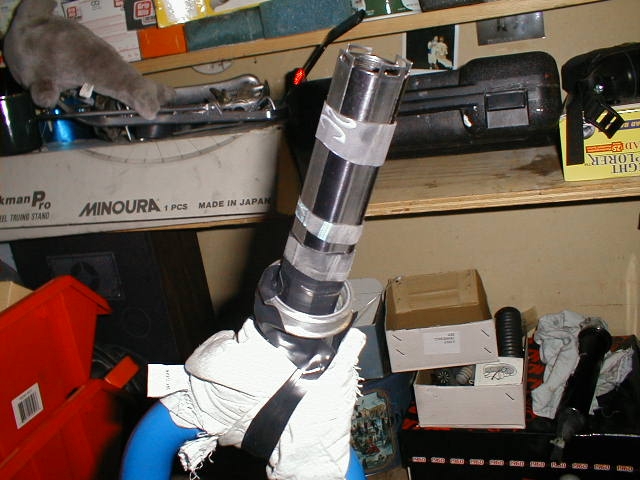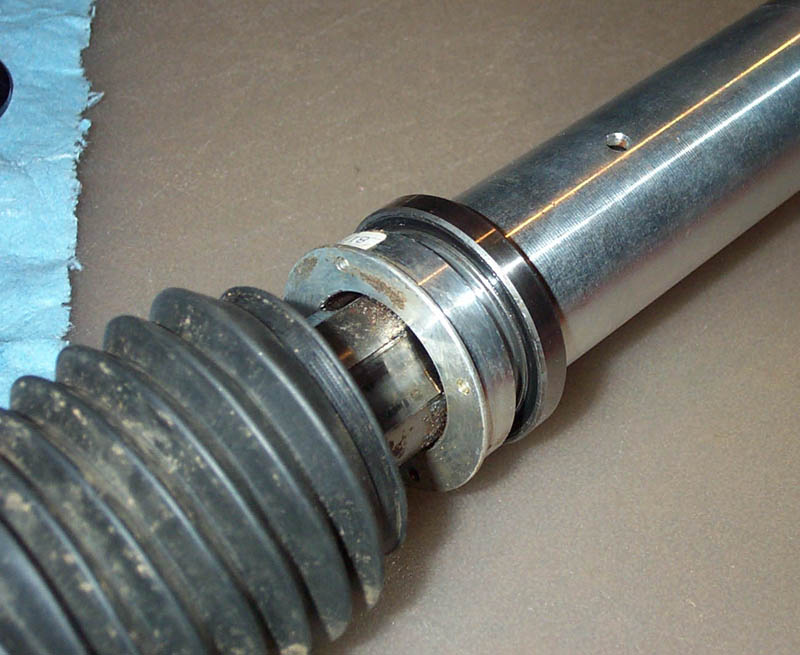Certainly Cannondale provides no technical help in the sense of stripping down a Headshok -just rather weak technical diagrams and advice such as 'service at an authorized dealer every 40 hours of use'.
Expedition navigation software cracked. Expedition 10. Expedition is simply the best tactical and navigation software available. Expedition has been in development since the mid 1990s by veteran Volvo Ocean Race navigator and Whitbread winner Nick White.
Headshok Repair and Disassembly To make it easier on yourself, it's best to have the shocked before proceeding. First thing to do is have a nice clean area to work on and to lay parts out. If you have removed the shock then you have already removed the top dustcap or adjuster cap. Now you can remove the aluminum cap screwed into the aluminum body. Cannondale makes a tool to remove this with, but you have a Green Park (SPA1) pin spanner it will work as well. Once this is removed the shock will telescope freely in and out.
This cap that was just removed is attached to an aluminum pushrod at the interface between the pushrod and cap there may be a foam ring, slide down the ring to expose an area to put a wrench on, then with you pin spanner you can then remove the top cap. Now you have the top cap removed, you will notice that it is attached to an aluminum rod, as seen here.
The next thing is to remove the outer steerer from the assembly. When doing this the bearings and races will come out. It's best to label the races and where they go along with the bearings so that they are replaced the same way they were assembled. Some races are different thickness, you may want a micrometer to measure them with. I found that the inner races are all the same thickness and the outer races are different thickness, bye only varied by a few thousands of an inch. To remove the aluminum outer steerer, the large nut has to be remove from the base. This can be done using your pin spanner, the holes are shown here in the picture. Descargar ogg_stream_reset_serialno para gta san andreas pc.
The nut is on there with thread locker so it is very hard to turn, don't worry if you think you are stripping the threads.
Excuse if this post is inappropriate for vintage. Unfamiliar with this model. Lucky me, an unknown model year Cannondale fell upon my doorsteps. (Not exactly like that but graciously from a neighbor who sadly is no longer able to safely ride. Thats another story but I told him he's not allowed to give it up that easily.) Anyways, he called it a Trek and I was ahhh, no it says Cannondale right there in big bold letters.
He replied, we'll its a trekking bike, ya know! No arguing that, its a hybrid R-300 Adventure whatever CAAD 2 HeadShok jobbie - with a plush saddle and pogo seat post.
Unfamiliar with all this stuff, what do I need to service the HeadShok? The bike is like new and all functions, but just want to be prepared for the unexpected servicing of this fork -possibly obsolete parts. Nice linear / V brakes stopping 700 x 32c rubber, room for much wider + future mudguards. Has SRAM twisties of which I might as well keep, though I'm thinking this ride needs some Midge On-ones or at least some drop bar changeout. __________________ ● 1971 Grandis SL ● 1972 Lambert Grand Prix frankenbike ● 1972 Raleigh Super Course fixie ● 1973 Nishiki Semi-Pro ● 1980 Apollo 'Legnano' ● 1981 Miyata 1000 ● 1984 Bianchi Limited ● 1984 Nishiki Landau ● 1984 Peugeot Vagabond ● 1985 Trek 600 ● 1985 Shogun Prairie Breaker ● 1986 Univega Nuovo Sport ● 1986 Merckx Super Corsa ● 1987 Schwinn Tempo ● 1988 Schwinn Voyageur ● 1989 Trek 400 ● 1990 Cannondale ST600 ● 1993 Technium RT600 ● 1996 Kona Lava Dome ● And a Bike to Be Named Later ●. The most important thing really is keeping that rubber boot intact.
It's keeping the sliding surfaces and needle bearings/races clean. If you know what your doing all the bearings and races are replaceable, they came in a bunch of different sizes and you need a whole pile of tools to get the thing apart though.
I can't recall if any specific grease was called for, but just lifting the boot up and greasing things up in there was 99% of keeping the things going. The internal damping cartridge on some models had a tendency to blow out, they will still work but just go up and down with no control. Some had a lock out switch or dial on top, the lock out was the first thing to blow on those models, again still works but lock out fails and possibly damping/rebound control. The only models that will fail in a way that prevents riding would be an air spring version, schrader valve located at bottom of steerer tube on those guys.


Surprising amount of service parts for head shocks show up on ebay, and pretty cheap too. You really have to know what you're looking for and have the tools however. At one point there was a shop that serviced them and the later lefty forks, I can't recall the name at the moment. Like most of these things the folks over at retrobike.co.uk often know more or even have the service manual posted somewhere on the site. If you need parts, contact Mendonsmith Cycles.
He has a deep knowledge of Cannondale suspension (Lefty's, in particular), and may even have parts. That said, I've seen very few of the hybrid-style bikes that had broken headshocks. The first thing I check if I see a sagging front end is for a schrader valve under the fork crown, and if present, give the fork some air with a shock pump. I'd say the better part of 75% of bikes pass that treat with a working, if not well-functioning, headshock.Before you pump it up, remove the schrader valve core and drip a little oil into the shock. The oil provides the final seal, and the shock will lose air quickly without occasional renewal of the oil. And a floor pump with a schrader head works fine. I have a '93 mountain bike with a head shock.